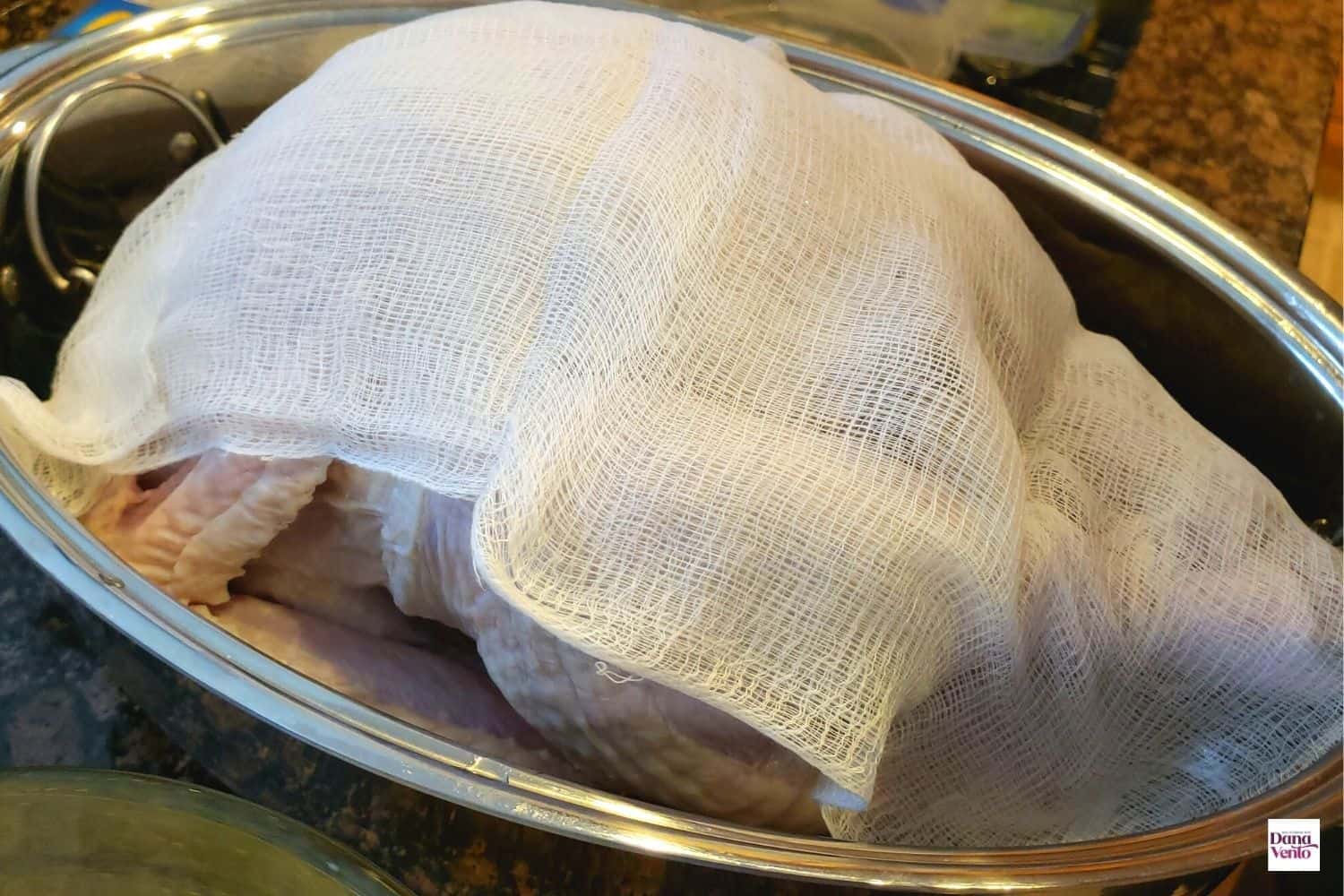As the holidays approach, thoughts turn to festive gatherings with family and friends. And at the center of many celebrations is a perfectly roasted turkey, golden brown on the outside and moist and flavorful within.
Achieving this ideal turkey can seem daunting for home cooks, But there’s a humble kitchen item that helps ensure roasting success cheesecloth
What Exactly is Cheesecloth?
Cheesecloth is a loosely woven, gauzy cotton fabric available at any grocery store. Originally used for straining cheeses and wrapping food, cheesecloth has become a go-to turkey roasting tool.
Its open weave allows moisture and air flow This quality makes cheesecloth ideal for protecting the delicate breast meat of poultry.
Why Does Turkey Need Cheesecloth?
The turkey breast is prone to overcooking and drying out. Cheesecloth provides a protective barrier:
-
It prevents the breast from browning too quickly while allowing the interior to cook through.
-
It holds in moisture released from the meat during roasting.
-
Infusing the cloth with flavorful liquid keeps the turkey tender and adds flavor.
The result? Juicy, succulent meat with a beautifully burnished skin.
How to Use Cheesecloth on Your Turkey
Using cheesecloth on your holiday bird is simple:
-
Soak the cheesecloth in melted butter, wine, broth or other flavorful liquids.
-
Wring it lightly to remove excess.
-
Drape it over the breast and top of drumsticks.
-
Roast the turkey as normal, basting the cheesecloth if needed.
-
Remove it during the last hour to brown the skin.
The cheesecloth bastes the turkey from within, while allowing the skin to crisp up. It’s a win-win!
Cheesecloth Tips and Tricks
Follow these tips for cheesecloth success:
-
Use enough cloth to cover breast and drumstick meat.
-
Check that it stays in place during roasting.
-
Baste with pan juices if it dries out.
-
Remove carefully to preserve delicate browned skin.
-
Discard after use. The cloth absorbs fat and becomes unsanitary.
-
Don’t use on poultry going above 375°F, as it may scorch.
Benefits of Using Cheesecloth on Turkey
Why exactly should you bother with cheesecloth? Here are some of the benefits it provides:
-
Prevents overcooking and drying out of breast meat: The light fabric forms a protective layer to maintain moisture.
-
Allows even browning: Air can flow so the skin crisps up nicely unlike when using foil.
-
Infuses flavor: The cloth acts as a built-in basting system from absorbed liquids.
-
Saves basting time: No need to open the oven and risk dripping juices.
-
Easier than tenting with foil: One less step for busy holiday cooks.
-
Promotes food safety: Unlike basting tools, cheesecloth doesn’t spread bacteria.
Alternatives to Cheesecloth
If you don’t have cheesecloth on hand, here are a few alternative options:
-
A large piece of parchment paper with slits cut in it
-
Several layers of paper towels
-
A thin cotton kitchen towel
-
Cheese paper or butcher paper
While these can work in a pinch, they may not allow as much moisture transmission. For best results, opt for cheesecloth.
Holiday Turkey Perfection
This year, simplify your holiday turkey roasting with an often overlooked yet effective kitchen tool – humble cheesecloth.
Drape it over the breast and drumsticks, infused with flavorful liquid, for built-in bastion and protection against overcooking.
Your guests will be impressed by a gorgeously burnished, juicy turkey thanks to this easy method. Cheesecloth is the secret to roasting success!

Step 10: Baste Every 30-45 Minutes



After about 30-40 minutes, begin basting your turkey, both under and over the cheesecloth.
Basting times are a balance best achieved with practice and your individual bird. There are two things to consider here:
- Every time you open the oven door, you lose heat and lengthen cooking time
- Every time you baste, you add yummy moisture and flavor
So you have to find that happy place between cooking time and basting time. Weve found about 40 min. is usually a pretty good happy medium. Technically, the butter coasted bird covered with a butter soaked cheesecloth wrap makes it so you dont have to baste much, if at all. But the reality is, everyone loves checking on the bird and fussing over it. And basting with the herb butter really does make it moist and delicious. And fortunately, since the turkey is covered with butter soaked cheesecloth, the intermittent fussing doesnt dry it out the way basting a turkey without the cheesecloth can.
So find your happy place, and when you baste, spoon or brush the herb butter both under and over the cheesecloth, tucking it back around the bird carefully, as well as possible.
Step 9: Reduce Heat to 350

Close the door and then reduce the oven temperature to 350 degrees and allow the turkey to roast, undisturbed, for at least 30 minutes. Dont peek! Just leave it alone!
Keep Your Turkey Moist and Juicy Using Cheesecloth | Mad Genius Tips | Food & Wine
FAQ
Should I use a cheesecloth on my turkey?
What can I use instead of cheesecloth for turkey?
Can cheese cloth go in the oven?
Can you smoke a turkey with a cheese cloth?
